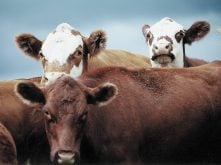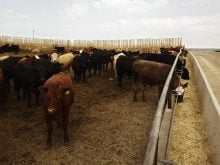This cattle market information is selected from the weekly report from Canfax, a division of the Canadian Cattlemen’s Association. More market information, analysis and statistics are available by becoming a Canfax subscriber by calling 403-275-5110 or at www.canfax.ca.
Fed market gains
The fed cattle market gained almost $2 per hundredweight last week, but top-end sales were stalled at $275 per cwt. Bottom end sales last week were reported at $270 per cwt. delivered, $5-$10 per cwt. higher for steers and heifers, respectively, than the previous week.
Read Also

Pakistan reopens its doors to Canadian canola
Pakistan reopens its doors to Canadian canola after a three-year hiatus.
Large market-ready supplies limited market upside. Many producers are selling cattle simply to get a hook spot because cattle are large and high feed costs are adding to the red ink. Most of the cattle sold last week were booked for the second half of March delivery.
Some producers have held cattle back, not willing to sell at a $20 per cwt. discount to the U.S. market. Despite the weak basis, lack of competition from American packing plants on the fed market has been disappointing.
Carcass weights in the West remain large, with western steer weights averaging 926 pounds, 15 lb. larger than last year and 30 lb. larger than the five-year average. Ontario is the opposite, with weights at 956 lb. but 32 lb. below last year and 19 lb. below the five-year average.
Packing plants are back to full throughput, which will help work through large supplies. February is often a lacklustre month for the fed market, but prices should pick up through spring. Some cattle are backed up, and supplies will remain ample for at least the next month.
In the United States, live prices in the north and south were generally around US$142 per cwt., $2 per cwt. higher than the previous week. Dressed sales in Iowa and Nebraska ranged from $224-$226 per cwt., steady to $2 per cwt. stronger.
U.S. steer carcass weights increased two lb. to average 930 lb., one lb. shy of the record set in late 2020. Beef cow slaughter remains high in the U.S. and is among the bigges
Cow prices strengthen
Last week D2 cows were at the highest point since July, trading more than $4 per cwt. stronger to average $83.50. D3s averaged $72.20.
Ontario cow prices have strengthened for six consecutive weeks, gaining $17 per cwt. and traded at a $6.50 per cwt. premium to the Alberta market. In Ontario for mid-February, it was the third highest price on record. Only 2015 and 2016 were higher. In Alberta for mid-February it was the third lowest price in the past eight years.
For the week ending Feb. 12, western Canadian cow slaughter totalled slightly more than 7,900 head, the second largest cow slaughter seen this year. From an historical perspective, cow slaughter in Western Canada remains moderate, with volumes well below the five-year average.
Eastern Canada has a different story. Since the start of the year, cow slaughter has averaged 2,587 head per week, the largest since 2012.
Low prices for heavy heifers
Calf and feeder prices have been moving in opposite directions, and seasonally this is not a surprise. The western Canadian calf index is at the highest level since late September.
New annual price lows were set for 900+ lb. heifers. For the month of February, the price spread between an 850 lb. steer and heifer has averaged $18.50 per cwt. Over the past five years, the average price spread between the two in February is just under $15 per cwt. There are also wider price spreads on lightweight calves but to a smaller degree. For February, the price spread between 550 lb. steers and heifers has averaged $33 per cwt. compared to the February five-year average of $32.
For the week ending Feb. 5, Canadian feeder cattle exports to the U.S. totalled 8,689 head, the largest weekly volume since April 2019. On the import side, in December slightly more than 12,000 head of feeder cattle were imported from the U.S., the smallest volume since spring 2020.
Prices for bred cattle have improved recently. Demand for late calving cows continues to be weak with prices not much above slaughter value. Bred cows traded from $1,050-$2,225 per head, averaging $1,515. Bred heifers ranged from $1,475-$2,175 per head, averaging $1,775.
U.S. beef softens
In U.S. trade, wholesale beef prices continued to soften, with Choice down about US$5 per cwt. to average $269.59, while Select averaged $264.85, down about $3 per cwt.














